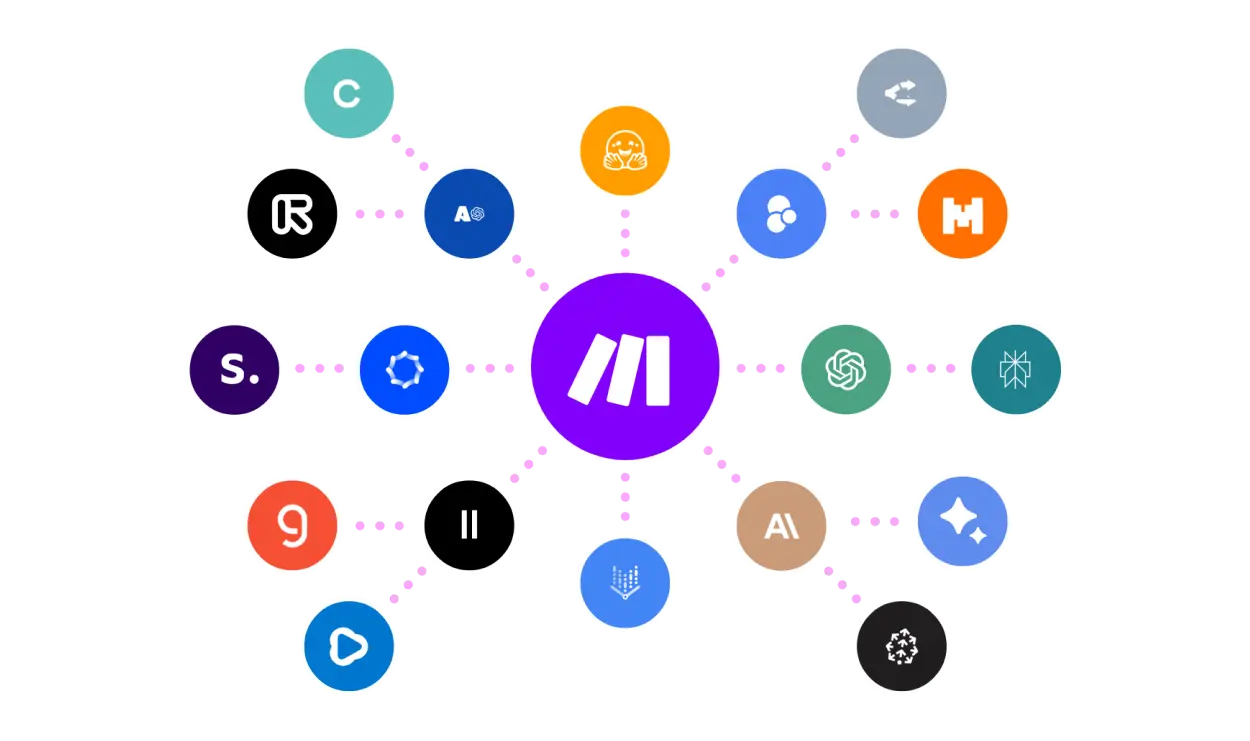Unlock Success: Craft an Effective Marketing Automation Strategy
What is a Marketing Automation Strategy?
A marketing automation strategy is a structured approach to utilizing software tools and technology to streamline and automate repetitive marketing tasks. These tasks include sending out emails, posting on social media, managing customer data, and tracking interactions with prospects and customers. By automating these processes, businesses can ensure that their marketing efforts are both efficient and effective, allowing them to focus on higher-level strategic planning and creative work.
Marketing automation isn’t just about making tasks easier—it’s about making them smarter. By using data-driven insights, a marketing automation strategy helps in segmenting audiences, personalizing communications, and delivering the right message at the right time. This ensures that potential customers are nurtured through the sales funnel with minimal manual intervention, leading to higher conversion rates and better customer relationships.
Why is Marketing Automation Important?
Implementing a marketing automation strategy is crucial for businesses that want to scale their marketing efforts without exponentially increasing their workload. Automation allows marketers to manage large-scale campaigns with precision and consistency, ensuring that no potential lead slips through the cracks. This strategy is particularly important in today’s digital landscape, where customers expect personalized, timely interactions with brands.
The importance of marketing automation can be highlighted by its ability to improve lead nurturing. By automatically segmenting and scoring leads based on their behavior and engagement, businesses can deliver targeted content that aligns with the lead’s stage in the buyer’s journey. This not only enhances the user experience but also significantly increases the likelihood of conversion.
Additionally, marketing automation provides comprehensive analytics and reporting features, enabling marketers to track campaign performance in real-time and adjust strategies based on data insights. This data-driven approach allows for continuous optimization, helping businesses achieve better ROI on their marketing investments.
Key Elements of a Marketing Automation Strategy
An effective marketing automation strategy is built on several core components:
- Lead Scoring and Management: Automation tools can assign scores to leads based on their actions, such as website visits, email opens, or content downloads. This scoring system helps prioritize leads for follow-up, ensuring that sales teams focus on the most promising prospects.
- Audience Segmentation: By segmenting audiences based on various criteria (e.g., demographics, behavior, purchase history), businesses can tailor their messaging to meet the specific needs and interests of each group. This increases the relevance and impact of marketing efforts.
- Personalization: Automation allows for personalized content delivery, ensuring that each customer receives messages that are specifically relevant to them. This could include personalized emails, product recommendations, or targeted social media ads.
- Workflow Automation: Marketing automation software enables the creation of workflows that trigger specific actions based on customer behavior. For example, if a customer abandons a shopping cart, the system can automatically send a reminder email with a special offer to encourage completion of the purchase.
- Multi-Channel Integration: Effective marketing automation integrates various channels—such as email, social media, and SMS—into a cohesive strategy, ensuring that customers have a seamless experience regardless of how they interact with the brand.
- Analytics and Reporting: Automation platforms offer robust analytics tools that provide insights into campaign performance. Marketers can track metrics such as open rates, click-through rates, and conversions to measure success and identify areas for improvement.
The Role of Data in Marketing Automation Strategy
Data is the backbone of any marketing automation strategy. The more accurate and comprehensive the data, the more effectively a business can segment its audience and personalize its messaging. Data collected from customer interactions, website behavior, and previous marketing campaigns can be used to build detailed customer profiles, which inform the automation workflows.
For example, data on a customer’s browsing history can trigger automated recommendations for products they’ve shown interest in. Similarly, data on email open rates can help refine subject lines and content for future campaigns. The ability to track and analyze data in real-time also allows businesses to quickly adapt their strategies to changing customer behaviors and market conditions.
To make the most of marketing automation, businesses should invest in maintaining clean, up-to-date data. Regularly reviewing and updating customer information ensures that the automation tools have the most relevant data to work with, leading to more accurate targeting and better results.
Getting Started with Marketing Automation
For businesses looking to implement a marketing automation strategy, the first step is to clearly define their marketing goals. Whether it’s increasing lead generation, improving customer retention, or boosting sales, having specific objectives will guide the development of the automation strategy.
Next, businesses should choose the right marketing automation platform that aligns with their needs. Popular platforms like HubSpot, Marketo, and Mailchimp offer various features tailored to different business sizes and industries. It’s important to select a tool that integrates well with existing systems and offers scalability as the business grows.
Once the platform is in place, the focus should be on creating detailed customer journeys that map out how leads move through the sales funnel. By understanding the typical customer journey, businesses can design automation workflows that effectively nurture leads and drive conversions.
Finally, continuous testing and optimization are crucial for a successful marketing automation strategy. By regularly analyzing performance data and making adjustments, businesses can ensure that their automation efforts remain effective and aligned with their goals.
Steps to Develop an Effective Marketing Automation Strategy
Developing a marketing automation strategy involves careful planning and execution to ensure that automated processes align with your business goals. Below are the essential steps to create an effective marketing automation strategy.
1. Define Clear Goals and Objectives
The first step in developing a marketing automation strategy is to clearly define what you want to achieve. Your goals should be specific, measurable, achievable, relevant, and time-bound (SMART). For example, you may aim to increase lead generation by 20% over the next six months or improve email open rates by 15%. Having well-defined goals will guide the rest of your strategy and provide benchmarks for measuring success.
2. Understand Your Audience
To effectively automate your marketing, you must have a deep understanding of your target audience. This involves creating detailed buyer personas that include information such as demographics, pain points, preferences, and behavior patterns. Understanding your audience allows you to segment them accurately and tailor your automated messages to meet their specific needs and interests.
3. Choose the Right Marketing Automation Platform
Selecting the right marketing automation platform is crucial for the success of your strategy. There are numerous platforms available, such as HubSpot, Marketo, and ActiveCampaign, each offering different features and integrations. When choosing a platform, consider factors such as your business size, budget, and specific needs. Ensure that the platform you choose integrates seamlessly with your existing tools and systems, such as your CRM and email marketing software.
4. Map Out Customer Journeys
Mapping out customer journeys is essential for understanding how your leads move through the sales funnel. This process involves identifying key touchpoints where prospects interact with your brand, from the initial point of contact to the final purchase. By mapping these journeys, you can create automated workflows that guide prospects through each stage of the funnel, delivering the right content and messages at the right time.
5. Develop Targeted Content
Content is a critical component of any marketing automation strategy. To effectively nurture leads, you need to create content that resonates with your audience at different stages of their journey. This could include blog posts, eBooks, webinars, or personalized email campaigns. Ensure that your content is valuable, relevant, and aligned with the specific needs of each audience segment. Additionally, use dynamic content features within your automation platform to personalize messages based on user behavior and preferences.
6. Set Up Automation Workflows
Once you have your content and customer journeys mapped out, the next step is to set up automation workflows. Workflows are the automated sequences that trigger specific actions based on user behavior. For example, when a lead downloads a whitepaper, the system can automatically send a follow-up email with additional resources. Effective workflows should be logical, streamlined, and designed to move prospects closer to conversion with each interaction.
7. Integrate Multi-Channel Marketing
An effective marketing automation strategy should encompass multiple channels, including email, social media, SMS, and website interactions. Integrating multi-channel marketing ensures that your messaging is consistent across all platforms and that you can reach your audience wherever they are. For example, you can use automation to trigger social media ads based on email interactions or send SMS reminders to customers who have abandoned their shopping carts.
8. Test and Optimize Campaigns
Testing and optimization are ongoing processes in a marketing automation strategy. Regularly test different elements of your campaigns, such as email subject lines, call-to-action buttons, and content formats, to identify what works best. Use A/B testing to compare variations and gather data on what resonates most with your audience. Based on the results, continuously optimize your workflows and content to improve performance.
9. Monitor Analytics and Performance
Analytics play a crucial role in the success of your marketing automation strategy. Most automation platforms come with built-in analytics tools that allow you to track key metrics such as open rates, click-through rates, conversion rates, and ROI. Monitoring these metrics helps you understand the effectiveness of your campaigns and identify areas for improvement. Regularly review your performance data to make data-driven decisions and refine your strategy as needed.
10. Scale and Adapt Your Strategy
As your business grows, your marketing automation strategy should evolve to meet new challenges and opportunities. This may involve scaling your efforts by adding new automation workflows, expanding your audience segments, or integrating additional channels. Stay adaptable and be prepared to update your strategy in response to changing market trends, customer behavior, and technological advancements.
Measuring the Success of Your Marketing Automation Strategy
Measuring the success of your marketing automation strategy is essential to understanding its effectiveness and making informed decisions for optimization. By tracking the right metrics, you can gain valuable insights into how well your strategy is performing and identify areas for improvement.
1. Track Key Performance Indicators (KPIs)
To accurately measure the success of your marketing automation strategy, start by identifying the key performance indicators (KPIs) that align with your business goals. Common KPIs include:
- Conversion Rate: This metric measures the percentage of leads that convert into customers. A high conversion rate indicates that your automation workflows and content are effectively guiding prospects through the sales funnel.
- Lead-to-Customer Ratio: This ratio helps you understand how many leads are becoming paying customers. By analyzing this ratio, you can assess the efficiency of your lead nurturing process.
- Engagement Metrics: Metrics such as email open rates, click-through rates, and social media interactions provide insights into how engaged your audience is with your content. High engagement rates suggest that your messaging is resonating well with your audience.
- Customer Retention Rate: This metric measures the percentage of customers who continue to do business with you over a specific period. A strong retention rate indicates that your marketing automation strategy is effective in maintaining customer relationships.
- Return on Investment (ROI): Calculating ROI involves comparing the revenue generated from your marketing automation efforts to the costs involved. A positive ROI indicates that your strategy is delivering financial value to your business.
2. Use Analytics Tools
Leverage analytics tools within your marketing automation platform to gather data on the performance of your campaigns. Most platforms provide detailed dashboards and reports that offer insights into various metrics. For example, HubSpot and Marketo offer robust analytics features that track campaign performance in real-time. By using these tools, you can monitor how different elements of your strategy are performing and make data-driven decisions to optimize your campaigns.
3. Analyze Customer Journey Metrics
Understanding how leads and customers move through your sales funnel is crucial for measuring the success of your marketing automation strategy. Analyze customer journey metrics such as:
- Time to Conversion: This metric measures the average time it takes for a lead to move from the top of the funnel to conversion. A shorter time to conversion suggests that your automation workflows are effectively nurturing leads.
- Funnel Drop-Off Rates: Identify at which stages of the funnel leads are dropping off. High drop-off rates at specific stages may indicate a need to adjust your content or messaging to keep leads engaged.
- Customer Lifetime Value (CLV): CLV measures the total revenue a customer is expected to generate over their lifetime with your business. By understanding CLV, you can assess the long-term impact of your marketing automation efforts on customer value.
4. Conduct A/B Testing
A/B testing, also known as split testing, is a powerful method for optimizing your marketing automation strategy. By testing different variations of your emails, landing pages, or CTAs, you can determine which versions perform better and drive more conversions. Regularly conducting A/B tests allows you to refine your messaging, design, and workflows based on what resonates best with your audience.
5. Gather Feedback from Sales Teams
Your sales team is on the front lines, interacting directly with the leads generated by your marketing automation strategy. Gathering feedback from sales teams can provide valuable insights into the quality of leads and the effectiveness of your lead nurturing efforts. If the sales team reports that leads are not adequately qualified, it may be necessary to revisit your lead scoring and segmentation processes.
6. Review and Adjust Automation Workflows
Marketing automation is not a set-it-and-forget-it process. Regularly reviewing and adjusting your automation workflows is crucial for ongoing success. Use data from your analytics tools to identify any bottlenecks or inefficiencies in your workflows. For example, if you notice a drop in engagement after a particular email in a sequence, you may need to revise the content or timing of that email.
7. Monitor Customer Feedback and Satisfaction
Customer feedback is an important indicator of how well your marketing automation strategy is performing. Monitor customer satisfaction through surveys, reviews, and direct feedback to gauge how your automated communications are perceived. Positive feedback indicates that your strategy is enhancing the customer experience, while negative feedback may highlight areas that need improvement.
Conclusion
Crafting a successful marketing automation strategy is more than just implementing software; it’s about creating a comprehensive plan that aligns with your business goals and enhances customer engagement. By automating repetitive tasks and using data-driven insights, businesses can streamline their marketing efforts, improve lead nurturing, and ultimately boost their return on investment (ROI).
A well-executed marketing automation strategy allows businesses to personalize interactions, efficiently manage customer journeys, and maintain consistent communication across multiple channels. The key to success lies in continuous monitoring and optimization—using analytics to track performance and making necessary adjustments to refine your approach.
One of the major benefits of a marketing automation strategy is its scalability. As your business grows, your automation tools can adapt, allowing you to manage larger campaigns and more complex customer interactions without losing the personal touch that customers value.
In today’s competitive digital landscape, adopting a marketing automation strategy is no longer a luxury but a necessity. It empowers businesses to stay ahead by ensuring that marketing efforts are not only efficient but also effective in driving conversions and fostering long-term customer relationships.
For those just starting with marketing automation, it’s important to remember that success doesn’t happen overnight. It requires careful planning, the right tools, and a commitment to continuous improvement. By taking a strategic approach and leveraging the capabilities of marketing automation, businesses can unlock new levels of efficiency and growth.
In conclusion, a marketing automation strategy is a powerful tool for modern businesses aiming to optimize their marketing processes, improve customer experiences, and achieve better results. By following best practices and staying adaptable to changes in the market, you can ensure that your marketing automation strategy remains a key driver of your business’s success.




